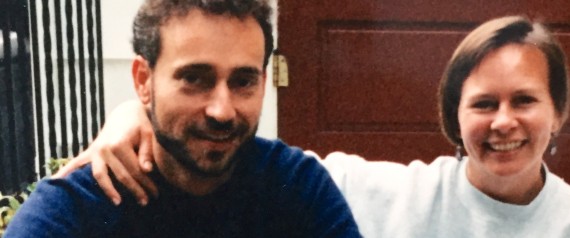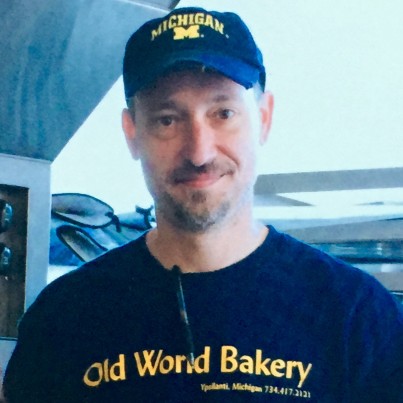
A Silicon Valley start-up with some big-name backers is threatening to upend genetic screening for breast andovarian cancer by offering a test on a sample of saliva that is so inexpensive that most women could get it.
At the same time, the nation’s two largest clinical laboratories, Quest Diagnostics and LabCorp, normally bitter rivals, are joining with French researchers to pool their data to better interpret mutations in the two mainbreast cancer risk genes, known as BRCA1 and BRCA2. Other companies and laboratories are being invited to join the effort, called BRCA Share.
The announcements being made on Tuesday, although coincidental in their timing, speak to the surge in competition in genetic risk screening for cancer since 2013, when the Supreme Court invalidated the gene patents that gave Myriad Genetics a monopoly on BRCA testing.
The field has also been propelled by the actress and filmmaker Angelina Jolie, who has a BRCA1 mutation andhas written about her own decision to have her breasts, ovaries and fallopian tubes removed to sharply reduce her risk of developing cancer.
But the issue of who should be tested remains controversial. The effort of the start-up, Color Genomics, to “democratize access to genetic testing,” in the words of the chief executive, Elad Gil, is generating concern among some experts.
The company plans to charge $249 for an analysis of BRCA1 and BRCA2, plus 17 other cancer-risk genes. That is one tenth the price of many tests now on the market.
Testing of the BRCA genes has generally been limited by medical guidelines to women who already have cancer or those with a family history of breast or ovarian cancers. Insurers generally have not paid for BRCA tests for other women, and some insurers are not paying at all for a newer type of screening known as a panel test that analyzes from 10 to 40 genes at once.
Dr. Gil of Color said his company’s test would be inexpensive enough for women to pay out of pocket, so that neither the woman nor Color will have to deal with insurance companies. He said the company was starting a program to provide free testing to women who cannot afford its test.
One of the company’s unpaid advisers is Mary-Claire King, the University of Washington geneticist whose work led to the discovery of the BRCA1 gene. Dr. King last year publicly called for testing to be offered to all American women 30 and older.
She said that half the women with dangerous mutations would not qualify for testing under current guidelines, in part because many inherit the mutation from their fathers rather than their mothers and a family history of breast or ovarian cancer might not be evident.

But other experts say that fewer women in the expanded group would be found to have dangerous mutations, raising the overall cost of testing per cancer case prevented. Moreover, expanded testing could result in many more women being told they have mutations that cannot be classified as either dangerous or benign, leaving women in a state of limbo as to whether they have an increased risk of cancer.
“We have to be careful that we are not just increasing this group of worried-well who have incomplete information,” said Dr. Kenneth Offit, chief of the clinical genetics service at the Memorial Sloan Kettering Cancer Center.
Dr. Offit said it was contradictory that Color was trying to expand testing to everyone on the same day the two biggest testing companies were joining forces to try to reduce how often they find these so-called variants of uncertain significance.
Color is planning to allow women to order tests through its website. Another Silicon Valley start-up that did that, 23andMe, had its health testing shut down in 2013 by the Food and Drug Administration.
Color executives say that unlike with 23andMe, a doctor will be involved in every order and in the test results. If a consumer orders the test directly from its website, her information will be sent to a doctor hired by the company to evaluate it.
An F.D.A. spokeswoman said that if doctors place orders, testing companies that operate their own laboratories do not need F.D.A. approval to offer their tests.
Some testing experts question whether Color can provide testing as inexpensively as it claims. While the actual sequencing might be done for less than $250, that is only part of the cost, which also involves interpretation and working with patients and doctors, they say. Other companies generally charge at least $1,500 for complete analyses of the BRCA genes or for multigene tests.
But Dr. Gil said Color has highly automated its processes and will even offer genetic counseling to women. He said the company chose the saliva test rather than a blood one because it’s easier for users but still accurate. Women send the saliva sample to Color for testing.
Dr. Gil received a doctoral degree in biology at the Massachusetts Institute of Technology, studying a cancer gene. But he has spent much of his career at Google and Twitter. The company’s president, Othman Laraki, also worked at Google and Twitter.
Color’s backers — it says it has raised about $15 million — are mainly from the world of high tech rather than life sciences. Its lead investors are the venture capital firms Khosla Ventures and Formation 8. Individual investors include Laurene Powell Jobs, the widow of Steve Jobs; Susan L. Wagner, a co-founder of the investment firm BlackRock; Padmasree Warrior, the chief technology and strategy officer at Cisco; and Jerry Yang, co-founder of Yahoo.
Dr. Offit of Sloan Kettering said that even Myriad, which long had a monopoly on BRCA testing and has the most data, has reported having a 2 percent rate of variants of unknown significance, meaning 2 percent of the time it cannot tell if a variant in a gene increases the risk of cancer or is benign. Other companies might have higher rates. And the rates for some other, less-well-studied genes can be 20 or 30 percent, he said.
The entire testing industry is now scrambling to pool data to lower that rate, and in some cases to catch up to Myriad, which has kept much of its data proprietary as a competitive advantage. Various data-sharing efforts are already underway, including by ClinVar and the BRCA Challenge.
Now there is also BRCA Share, which is based on a database of genetic variants maintained by Inserm, a French government health research institute. Quest Diagnostics agreed to provide money to improve that database and pay for experiments on cells that could help determine whether certain mutations raise the risk of cancer.
“We are going to help them make it better,” said Dr. Charles M. Strom, vice president for genomics and genetics at Quest. He said BRCA Share would be open to others, with LabCorp becoming the first to join.
Participants will have to contribute their data to the database. Companies will pay for access to the data on a sliding scale based on their size, while others will have access to the data without paying, he said.


